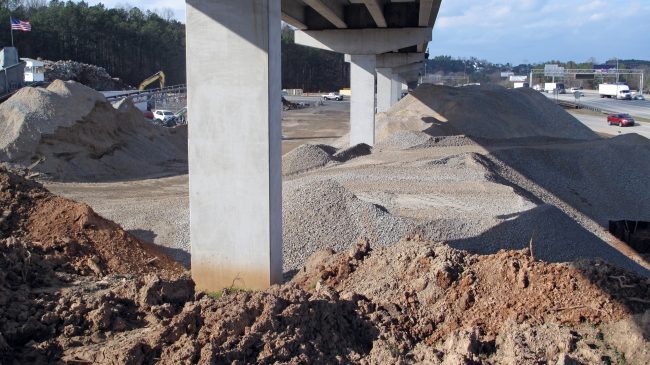The Trump administration’s new infrastructure proposal hopes $200 billion in new federal spending could spur $1.5 trillion in total infrastructure investment, but the plan’s streamlining and reducing of burdensome regulations may be the more important short-term policy.
A frequently used data point in infrastructure debates is that America’s cumulative infrastructure grade was a D+ on the American Society of Civil Engineers’ 2017 infrastructure report card. One of the less obvious problems driving the nation’s low infrastructure grades is permitting backlogs. Federal permit programs, like the Permit 404 program, increase repair costs and thwart the ability to implement timely maintenance programs. The 404 program requires a permit from the U.S. Corps of Engineers before dredged or fill material may be discharged into waters, but the logjam means getting permits can take years.
Several California counties have stated that processes to secure permitting can take three or more years, with costs in the millions of dollars for a single project. For example, a permit to maintain San Diego Creek Channel in Orange County took three years to get approval. The project cost $700,000 to clear 13 acres of vegetation, but 404 permit requirements called for 20 acres of mitigation, which added $2.8 million to the project’s cost. This type of “compensatory mitigation is required to replace the loss of wetland and aquatic resource functions in the watershed,” according to the federal government
In another case, it took seven years and over $1 million in environmental studies for Alaska to secure a permit to dredge and dispose of approximately 40,000 cubic yards of spoils in a harbor. Although the project was finally approved, the requirements imposed by the federal government ultimately made the project financially infeasible for the state.
Over the past century, the U.S. Army Corps of Engineers has accumulated a vast network of water management responsibilities for infrastructure that includes approximately 700 dams, 14,000 miles of levees, 12,000 miles of river navigation channels and control of structures, harbors and ports, and other facilities. Much of that water infrastructure is now deteriorating much faster than it is being upgraded or replaced.
The burdensome permitting process creates a dragnet, turning almost all routine maintenance work into drawn-out nightmares. And yet, despite long review times, the Corps ultimately rejects less than 1 percent of the permits it processes, meaning the process is just an extremely lengthy, expensive delay before the permit is ultimately granted.
To decrease the burdens and costs, the Corps could streamline the 404 permitting process to address inconsistencies, quicken reviews, and move toward more generic nationwide permits. The Corps could give property owners and state and local authorities — those most likely to be in touch with the community’s interests and know local details and nuances — the ability to make important permitting decisions.
A better, more efficient approach would also enhance private incentives to manage wetlands. “The Corps’ program to protect wetlands has not been as effective as those approaches that define private rights and rely on private incentives to internalize the external social benefits of protection,” the Mercatus Center found.
The Army Corps of Engineers’ 404 permit program is characterized by onerous reviews and expensive permitting backlogs. The costs for the delays often hit property owners and local authorities, who often do not have the time or money necessary for extensive permitting procedures. Voluntary, incentive-based alternatives could help mitigate the burdens of the backlog while enhancing the condition of the wetlands.
The Trump administration’s infrastructure plan attempts to help speed up the Army Corps of Engineers’ process by recommending that the Environmental Protection Agency’s veto power in the 404 permit process be removed. The streamlining of permit processes may not be as glitzy as big ribbon-cutting ceremonies, but it would be a major step in fast-tracking important projects and improving the nation’s infrastructure.
This column originally ran in The Orange County Register.
